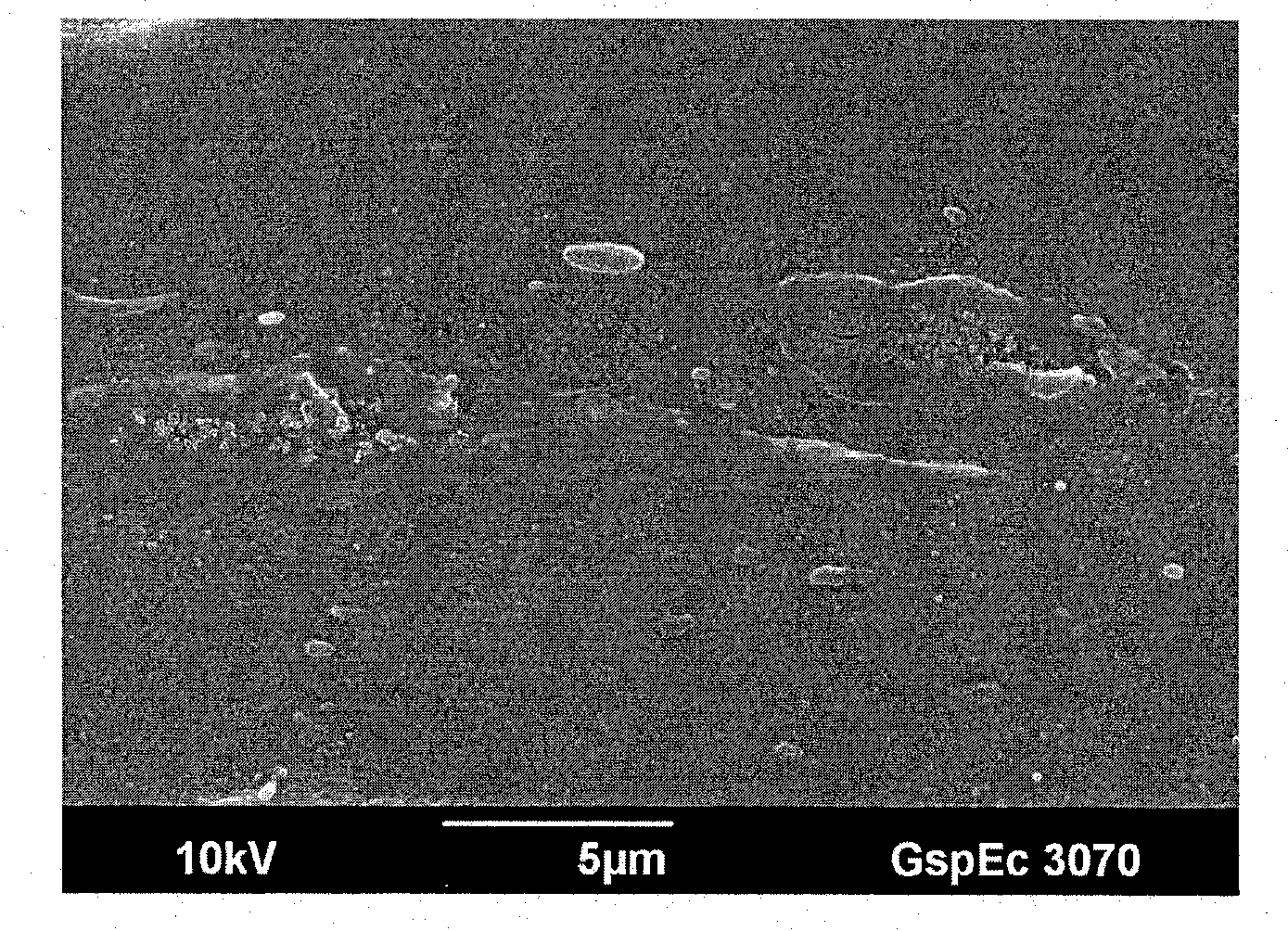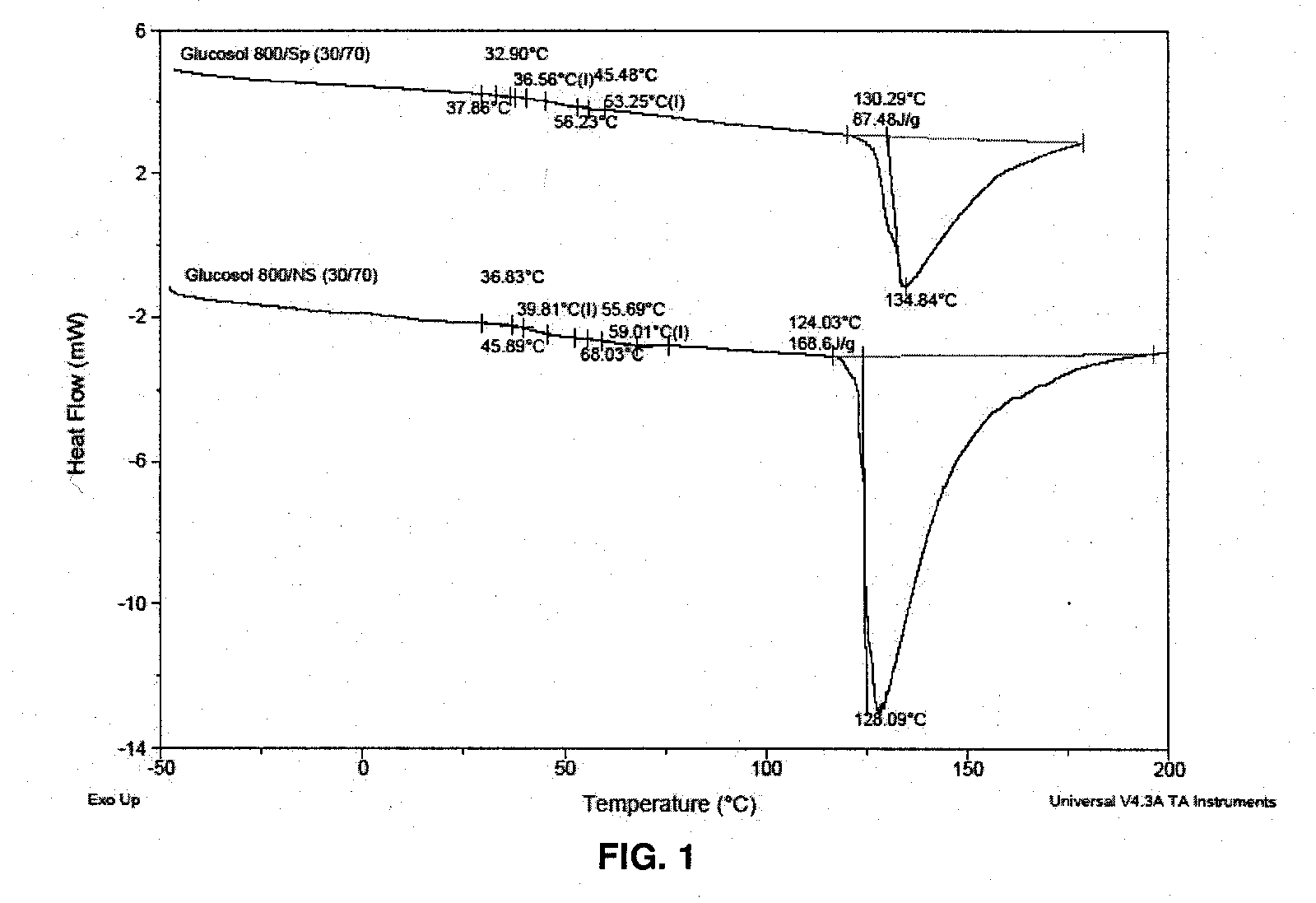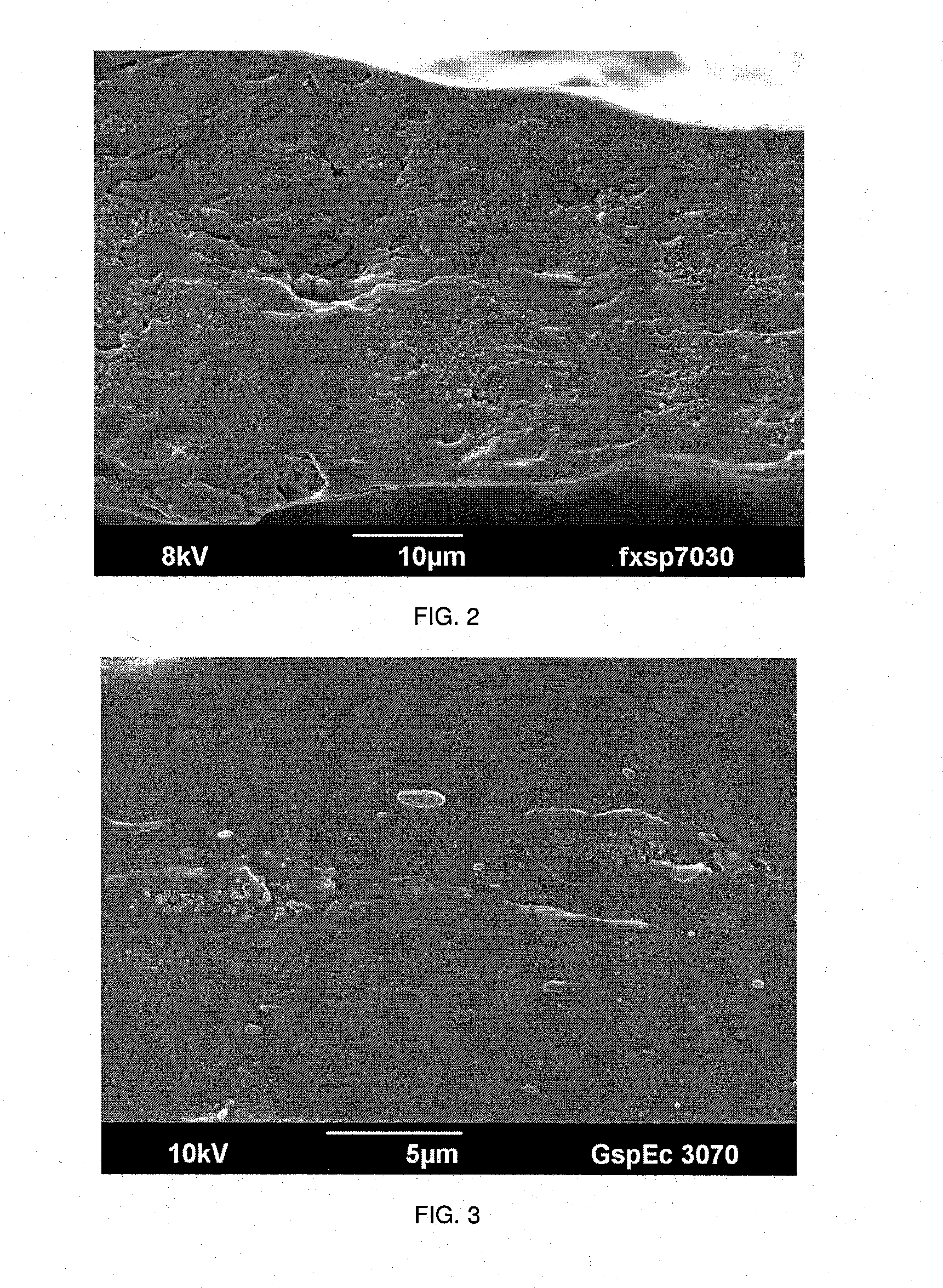Algae-blended compositions for thermoplastic articles
a technology of compositions and thermoplastics, applied in the field of polymer compositions, can solve the problems of affecting the sanitary conditions of the toilet, the inability to dispose of disposable absorbent products, and the inability to meet the requirements of the existing waste disposal system
- Summary
- Abstract
- Description
- Claims
- Application Information
AI Technical Summary
Benefits of technology
Problems solved by technology
Method used
Image
Examples
example 1
[0073]In theory, the presence of the lipids in algae should facilitate thermoplastic processing. According to this hypothesis, Spirulina, without being mixed with any plant polymers, was extruded using 30% glycerin as a plasticizer and 2% Excel P-40S as a surfactant. Thermo Prism™ USLAB 16 twin screw extruder (Thermo Electron Corporation, Stone, England) was used to complete the processing. It has eleven zones: zone 0 is a feeding zone where the materials from a K-Tron feeder (K-Tron North America, Pitman, N.J.) were accepted and conveyed to the zone 1, 2, etc. till zone 9. These zones are kneading sections of the twin screws, and zone 10 is a die located at the end of the extruder. The temperature setup for Example 1 was 80, 90, 115, 125, 125, 125, 122, 120, and 115° C. from zones 1 to 9. The die temperature was 110° C. The screw rotational speed was 150 rpm. The algae, after being mixed with 2% Excel P-40S, were fed at 1.6 lb / hr. Glycerin was pumped into zone 1 using a gear pump (...
example 2
[0074]After thermoplastic algae were successfully processed using glycerin, sorbitol was tried as a plasticizer for making a blend of Spirulina / sorbitol (70 / 30). In addition, surfactant Excel P-40S was added at 2% as well. Other conditions for the extruder were the same as those in Example 1, except for the fact that there was no glycerin pumping. However, the extruder torque was 70˜75%, and the pressure was high and fluctuated between 25˜25 bars. No strand could be formed. As a result, algae could not be processed when sorbitol was used as the plasticizer.
example 3
[0075]Instead of using sorbitol as the plasticizer in Example 2, polyethylene glycol (PEG 600) was used as a plasticizer in Example 3. The temperature profile and other processing conditions were the same as those in Example 2. The extruder torque was low this time at 40 to 45%, and the pressure was at 6 bars. However, algae could not be converted into thermoplastic materials.
PUM
| Property | Measurement | Unit |
|---|---|---|
| Temperature | aaaaa | aaaaa |
| Temperature | aaaaa | aaaaa |
| Temperature | aaaaa | aaaaa |
Abstract
Description
Claims
Application Information
 Login to View More
Login to View More - R&D
- Intellectual Property
- Life Sciences
- Materials
- Tech Scout
- Unparalleled Data Quality
- Higher Quality Content
- 60% Fewer Hallucinations
Browse by: Latest US Patents, China's latest patents, Technical Efficacy Thesaurus, Application Domain, Technology Topic, Popular Technical Reports.
© 2025 PatSnap. All rights reserved.Legal|Privacy policy|Modern Slavery Act Transparency Statement|Sitemap|About US| Contact US: help@patsnap.com



